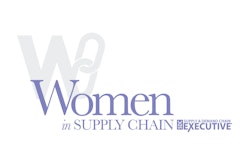
The Coronavirus disease (COVID-19) pandemic has had a significant impact on the global economy. However, the truth is, not all sectors are being affected the same. While sectors like tourism and travel face challenges, Software-as-a-Service (SaaS) companies are experiencing an acceleration in their subscription growth rates during this troubling period.
For instance, with the switch to remote work, SaaS products that allow teams to effortlessly work together — including document sharing, video conferencing, developer collaboration, etc. — saw an increase in subscription growth.
Virtual work, on-demand staffing, on-demand delivery and telemedicine have also been on the rise due worldwide lockdowns.
But, let’s take a closer look at this phenomenon. Why are SaaS companies appearing as if they are entirely padded from the macroeconomic struggles of COVID-19? Why are these companies faring better than others? Have SaaS companies secured their place as indispensable in the future economy?
Here's why SaaS will keep growing even as the economy shifts.
SaaS has flexibility and scalability beyond compare
With no tangible product, SaaS companies have an added advantage in the sense that SaaS offerings are limitlessly flexible. And, what’s more encouraging than having a flexible partner or service in this unpredictable COVID-19 era?
The ability to flow with or accommodate changes is an essential aspect of the current business expectations. If organizations can’t scale or flex their operations when needed, it will impact their ability to deliver services efficiently.
SaaS provides organizations with the chance to remain agile during this period since changes occur in the cloud. Business owners don’t have to waste time thinking about getting access or upgrades. Most importantly, they are leveraging technology trends as they occur, getting rid of the anxiety of staying current with vendor and customer expectations.
A business model perfect for remote teams
Communication and collaboration tools were already becoming vital to globally distributed teams. However, overnight, SaaS offerings like these became fundamental to business operations for many.
Right now, SaaS technology is helping organizations over-communicate crucial information (company-wide meetings/streaming all-hands), share communication plans across employees and partners, and quickly send files to remote workers.
In other words, since they are inherently able to be deployed remotely, SaaS solutions are in a good position to help organizations adjust to remote work and effectively navigate this significant disruption and change the way we all get the job done.
Cost advantages will continue to spur the growth of SaaS
SaaS is a real money-saver. In the current COVID-19 pandemic, cost-cutting tops the wish list for many businesses. But, how exactly does SaaS help organizations and governments cut costs?
Well, SaaS does not need to be installed by technicians on each computer in the office to serve its purpose. This means organizations don’t have to invest so much money on physical infrastructure like computers, since SaaS operations happen on the cloud. Also, organizations don’t need to purchase an on-premise software copy (that will probably become outdated in a year or less) for every employee that needs it.
Lastly, from a different perspective, on-premise software and systems are usually maintained by IT specialists, a valuable workforce that may find it hard to work from home. The big question here is, who was maintaining these on-premise systems when even everybody, technicians included, were on lockdown?
Many organizations that relied on these systems incurred significant losses, since their operations went on a standstill during the shutdown. However, on the contrary, those who quickly shifted or had already implemented SaaS technology, their IT people could respond to requests virtually, keeping all the business operations afloat. Evidently, this is another big reason why more organizations will continue relying on SaaS, even post-COVID-19.
Regulatory readiness
The SaaS market was growing — by multiple digits — even long before COVID-19. This has been forcing critical questions about how authorities can tweak their regulatory environment to enable SaaS use cases to improve citizens’ lives.
The pressing need to unearth solutions to keep economies and societies running during COVID-19 has also accelerated SaaS adoption across a wide range of industries.
And, because a similar pandemic is not impossible in the future, regulators and policymakers are now turning their attention to future-proofing — coming up with appropriate infrastructure to quickly deploy and facilitate SaaS solutions.
A safety net and a growth enabler
Disaster recovery and business contingency planning will be the main concern for many during post-COVID-19.
The disruption serves as a big reminder that digital transformation is fundamental to survival in this day and age. This global emergency has also revealed to us that the ability to scale up and down and test new systems in a safe setting is a priceless insurance policy to have.
So, besides being a safety net, SaaS has become a growth enabler. What’s more, as a driver of efficiency, SaaS is streamlining how organizations operate, eventually giving them a competitive edge.
SaaS solutions are here to stay
As one industry after another tumbles down, SaaS might come out as the COVID-19’s greatest survivor. Thanks to its little or lack of reliance on a physical supply chain, logistics and in-person customers, it has been harmed less by the COVID-19 crisis.
Additionally, SaaS offerings have gotten a big boost from the global switch to telecommuting, hence making themselves essential enough to the extent that they will forever be remembered for their impact on people’s lives during this crisis period.
There is no such thing as a sure or safe bet in today’s economy, but the SaaS industry is doing better than most.





















